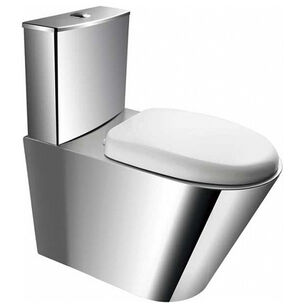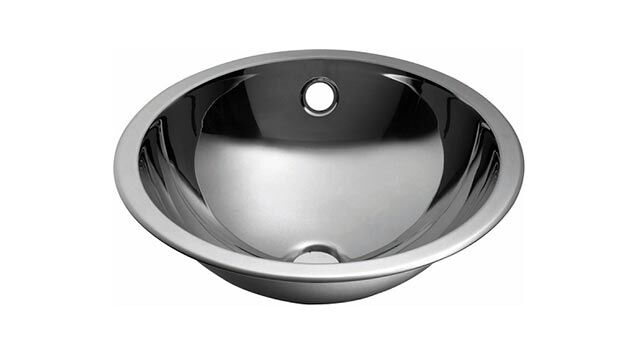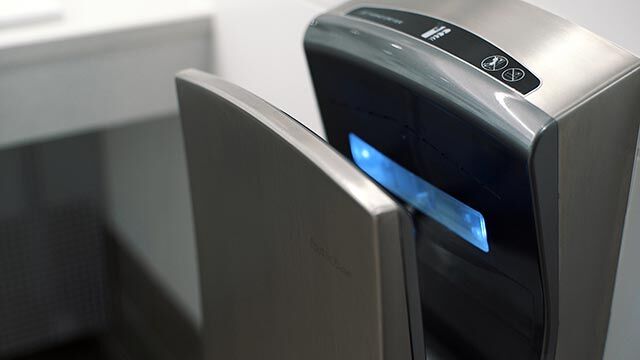Safe toilets in prison are not fiction.

Did Bierut receive the same amount of toilet paper as current inmates? Could Władysław Siła-Nowicki take a shower whenever he wanted and did he have hot water? Where in the bathroom can you hide a weapon? What are the legal requirements for sanitary corners? How to design a prison toilet so that inmates cannot use it in a way that is not intended?
Equipment of prison toilets over the years.
The oldest functioning prison is located in Rawicz, which has been operating as a prison unit since 1819 in the buildings of an abandoned Franciscan monastery. Over the years, this prison has changed its profile - initially it was intended for political prisoners, later communists such as Bierut, Nowotko, Finder and Buczek were held here. During the Stalinist period, the prison "hosted" such prominent Poles as Kazimierz Pużak, Stanisław Skalski, Wiesław Chrzanowski, Władysław Bartoszewski, Kazimierz Moczarski, Wojciech Borzobohaty, Władysław Siła-Nowicki and many others.

Changes, changes, changes in the equipment of toilets in prisons... but are they significant?
- In the 1980s, there was only cold water in the prison taps, and until 2012, 9,000 cells (out of approximately 22,000) were deprived of hot water.
- Since 1990, inmates were given one razor per month, but this amount was only increased to two per month in 2014, due to numerous complaints about rust on the cheapest razors, which would become unusable after just a few days.
- In 1973, inmates were given 100 grams of grey soap per month, but only in 2014 were they allowed to have shampoo - 100 ml per month.
- Since 1990, inmates have been given one roll of toilet paper per month, which has put an end to using newspapers as a substitute. This also means that prison libraries no longer have to check if all pages are present in returned books.
- In 2014, the number of toilet paper rolls was increased to two per month. This change cost the government 387,000 Polish zloty per year. However, according to inmates, this amount is still insufficient and only allows for maximum use for three weeks.
- In 1997, the Executive Penal Code established Article 110 § 2, and as a result, the minimum standard for the surface area of a prison cell. Interestingly, the norm of 3 m2 is one of the lowest in Europe. For example, in Norway, Ireland, the Netherlands, and Greece, this surface area is 10 m2. In Italy and Belgium, it is 9 m2, in Croatia - 8 m2, and in Germany - 7 m2. In Spain, Romania, and Bulgaria, it is 6 m2.
- It was only in 2014 that the problem of overcrowding was solved in almost all prisons in Poland. However, the service could not afford to build separate sanitary corners, which in practice meant that the toilet was only separated from the rest of the cell by a curtain.
Note: The prison service did not have precise data on the number of cells that had something more than a piece of material, but they estimated that it was less than half. They had accurate data, however, on the number of showers installed in cells - there were exactly 509 (out of 22,000 cells).
Prison hygiene and bathroom equipment today.
As of December 2018, there were 81 prisons in Poland, with an additional 52 external units. In addition, there were 39 remand prisons for the enforcement of imprisonment. They could accommodate just over 80,000 people. The number of inmates (convicted and temporarily arrested) was just over 72,000. According to the law, the minimum living space per inmate is
3 m2.
In exceptional situations, a prisoner can be placed in a cell with an area smaller than 2m. In such cells, there should be a toilet. Unfortunately, prisoners complain that some sanitary corners in cells still do not have full enclosures, and there are no individual shower stalls in the bathrooms, as required by the judgment of the European Court of Human Rights of December 15, 2015. The case was examined at the end of 2018 by the Commissioner for Human Rights. However, the results were alarming. 666 sanitary corners still did not have full enclosures, and 78 bathrooms did not have separate individual shower stalls. Therefore, the process of ensuring a minimum level of privacy for maintaining hygiene by persons deprived of liberty has not been completed. The Commissioner for Human Rights also criticizes solutions where the only sink in the cell is located outside the sanitary corner, in a place not shielded from the rest of the cell.
Safe toilet in prison is not fiction.
Article 110 § 4 of the Executive Penal Code defines the basic principles that should be followed when placing a convict in a living cell. These include, in particular, the need to prevent self-harm and committing crimes while serving a sentence. It is precisely this point that makes the selection of bathroom fixtures not so simple and obvious.
In 2019, the Supreme Audit Office, the supreme and independent state control body with the mission of guarding public money, published the results of an audit conducted in Polish prisons. From the report, we can read that the number of suicides exceeds 20 annually since 2017, while over 150 people attempt suicide each year, and attempted suicides, i.e. situations in which an Inmate commits self-harm with the intention of suicide, but simulated, for demonstration purposes without a real intention of taking their own life, in 2019 amounted to almost 200 incidents. In 2017, the number of assaults on officers was 112, while in 2018 it was 148.
The prison service and suppliers of furniture for inmates and companies producing sanitary equipment for prisons and penitentiaries face a great challenge - to provide products that prisoners will not be able to use for any other purpose than the one they were intended for.

Faneco vandal-proof set used in a modern prison cell.
Prison toilet equipment - the creativity of inmates knows no bounds.
Life behind bars forces one to adapt to the conditions and laws that govern it, which greatly develops the creativity of inmates. The most obvious ideas for creating weapons can be imagined by anyone - pieces of glass from a broken mirror, a broken ceramic sink, and many others. But did you also know that over the years, prisoners have been able to construct inventions such as:
- A knuckle duster made from a piece of wire wrapped in a shower curtain,
- A bat made from a wooden stick with razor blades on a string,
- A shotgun made from metal bed legs with bullets made from match heads, AA batteries, and damaged light bulbs.
- ?Pate? or a sock filled with rubble and stones, Nunchaku made from stool legs and bed sheets,
- Crossbow built from toothbrushes, rubber bands, and a piece of string.
One of the tasks of prison guards is to minimize the opportunities for vandalism and the use of everyday objects for this purpose. Professional companies offer solutions for prison equipment that eliminate the possibility of vandalism during the design stage.

Creative weapons created in prison conditions by inmates.
Only monolithic steel accessories for prison toilets guarantee safety!
Creating a weapon is one thing, but hiding it is a completely different matter. Prisoners use various spaces for this purpose: hydraulic knees, cracks in plaster or tiles, urinals, sinks with holes, or drains in bathrooms - they also hide drugs and narcotics in such places. One of the preventive measures is to prepare toilets and bathrooms in prisons in such a way that their destruction or use for smuggling is impossible. However, this requires comprehensive solutions.
How does the vandal-proof collection for prisons work?
Creating a collection of products dedicated to prison cells requires numerous consultations with legal experts and prison quartermasters. However, the biggest source of knowledge is contact with former Inmates, in order to see this problem through their eyes. After all, they know best what can be a threat in prison toilets and showers.
This is how our vandal-proof collection of steel equipment was created.
-
Steel mirrors that cannot be broken,
-
Steel Turkish bowls made of steel with a round shape that prevents hiding something inside. Additionally, they have rounded edges and are permanently attached.
-
Steel urinals and toilets,
-
Steel toilets for the disabled
-
Special sets combining a sink and toilet,
Stainless steel toilet equipment, another step towards greater safety.
Inmates who no longer want to continue their lives also have their ways - for years, prisoners have been trying to take their own lives by hanging themselves on bathroom hooks and bed frames or by cutting their veins with cell equipment. Manufacturers of specialized equipment respond to these issues by designing new solutions - how to ensure safety in prison cells and bathrooms.
An interesting example are vandal-proof bathroom hooks with automatic latch, which close like a switch under the weight. A simple solution that prevents suicide attempts or the use of equipment to create weapons. However, there are still not enough of such solutions.
Budget is not a barrier.
According to research, vandal-proof equipment made of steel, although it differs in price from basic ceramic sets, guarantees the safety of inmates and guards. Many facilities have already decided to cooperate with Faneco in the modernization of existing prisons and newly built detention centers at police stations. Further projects are already planned for next year.
The investment department of Faneco cooperates with general contractors of prison projects, investigative detention centers, correctional facilities, observation rooms, special supervision rooms, and closed centers for mentally ill individuals.
 Faneco vandal-proof stainless steel equipment set
Faneco vandal-proof stainless steel equipment set
Do you have any questions about equipping prisons with vandal-proof accessories?
Krzysztof Walczak
tel.: +48 505 497 625
k.walczak@faneco.com
Discover our comprehensive:
Bathroom equipment for the disabled
Bathroom equipment for HoReCa




 Polski
Polski
 Český
Český
 Deutsch
Deutsch
 Spanish
Spanish
 French
French
 Italian
Italian